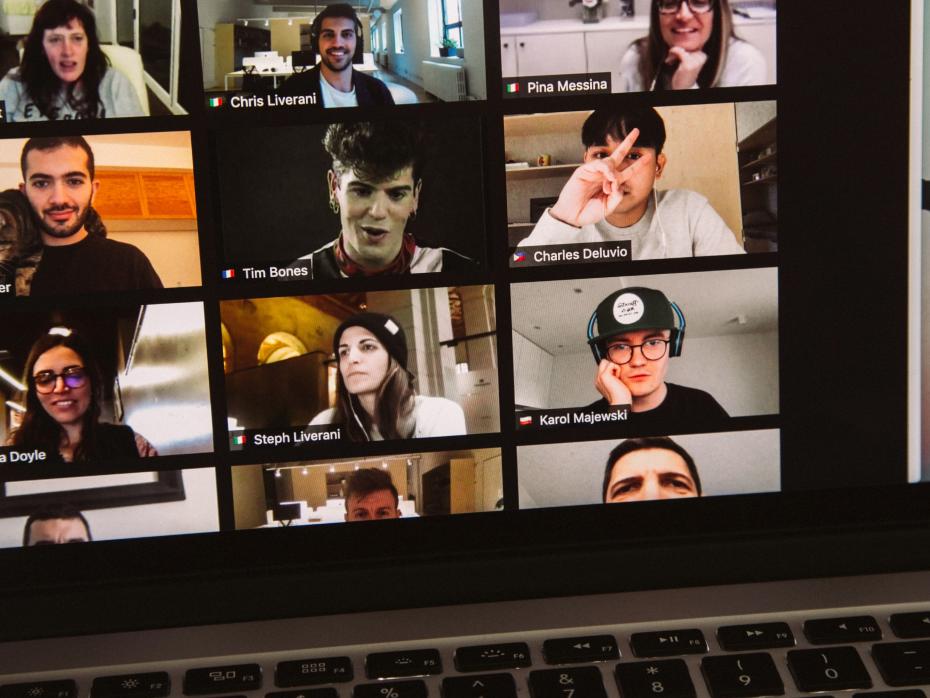A trend that started more than a decade ago has accelerated rapidly under the pressures of Covid-19. Whether you call it “phygital”, “blended” or “hybrid”, the move is unmistakable and increasing.
Many online learning programmes start with in-person immersion and, in fact, many online students enrol close to home − two-thirds within 50 miles in the US. Universities are partnering with companies such as WeWork or creating their own “micro” campuses, where online students drop in. Technology is serving as the interface between students and their spaces and support services, advising has moved to Zoom and staff are working remotely.
While the shift to “emergency-use online learning“ in 2020 had downsides, there’s little doubt that universities and students can see greater flexibility and affordability in mixing on-campus and online experiences.
In the decade before Covid, a new kind of university partner − online programme managers, or OPMs, such as Noodle and 2U − accelerated the adoption of online learning. OPMs aimed to complement university capabilities and capacity with services including marketing, recruiting, instructional design, content development, career coaching, technology platforms and support to run the courses.
Yet the OPM model has changed: previously, they took on all the risk of creating a course and handled production, hosting and marketing. In return for a long-term revenue-sharing agreement, OPMs would help find students, create the videos, host the tech platform, manage operations and even provide career services, tutoring and coaching, too. Typically, the OPM got 60 per cent of the tuition revenue – initially a good deal for many universities because, apart from the risk to their brand, they avoided all the downsides, particularly upfront costs of $1 million or more to launch an online degree programme.
A decade later, however, online learning no longer seems risky. Designing, delivering and supporting online and hybrid programmes is now seen as a core competency for colleges and universities. The demand for more flexible and accessible programmes is there, and usually the quality is, too, with online learners generally more satisfied than their on-campus counterparts in recent studies.
Given the increased demand, more and more institutions are increasing their capability and capacity instead of giving up 60 per cent of tuition revenue. With this new reality, first-generation OPMs are transitioning to become fee-for-service providers, delivering services that complement what institutions can do in-house.
Regardless of the business model, online learning is undoubtedly rising fast. This challenges universities in three ways:
Centralising, standardising and scaling
Instead of a patchwork of platforms and providers, many institutions are now looking to coordinate resources more efficiently and make it easier for students to cross-enrol. The University of Tennessee is doing this, and the University of California, Berkeley’s Academic Innovation Studio is a central resource that other institutions will soon have.
Going forward, as seen at New York University, institutions are creating instructional technology support models that stitch together central and school-based support into something coherent and scalable. Even while rationalising and centralising support, though, universities mustn’t overlook the fact that online learning still requires space: studios to create content, workspace for staff, and convening/training space for faculty.
Creating the physical/digital hybrid
Just as the hybrid workplace blends home and office schedules, hybrid learning is coming into its own, although without a clear sense of how different modes will mix in the future. Will it mean classrooms with both remote and in-person students connecting in real time? Courses with in-person and online classes on certain days? Students who mix online courses with on-campus offerings in the same semester?
Most students won’t want to give up the flexibility of learning anytime, anywhere. The result has big organisational and operational implications for universities, most critically the need to coordinate and combine staff, schedules, services and technologies that support on-campus and online learning. Resources will shift from academic space to technology.
From class to community
Early online programmes focused on the digital classroom, and over time progress has been made well beyond this, with services, clubs, activities and social networks now regularly on offer. During Covid, though, we did see how much students, faculty and staff missed the community that campuses foster. Call it “the Covid paradox”: we did much more online but also learned the value of being together in person.
Online degrees should be more than just classes, and building community online is critical. The campus of the future should focus on what can’t be done as well online: research labs, studios, maker spaces. In one recent example, a survey asked students how they’d allocate their tuition, and they put only 40 per cent towards their classes, demonstrating the value of the campus, clubs and community. The rest relies on creativity. With online learning and remote work, institutions can “grow in place” to enrol more students and colocate corporate and community partnerships, with campuses becoming more porous.
University leaders everywhere are thinking about how to bring the physical and digital together to maximise experience and efficiency – and realising that the coming changes will vary widely by discipline.
For instance, for a new interdisciplinary science building, physics requested the retention of large lecture spaces for physical demonstrations paired with 30-person online discussion sections. In response, biology said the opposite: move the big lectures online, with rooms for in-person breakout discussions.
Universities will look carefully through the equity lens − considering race, gender, age and other facets of students’ identities − because learning online can widen equity gaps. Evidence-based strategies help reveal which “phygital” approaches will work for all students and which can help disadvantaged students even more: physical and digital student-service hubs, active and experiential learning on projects with impact and holistic advising are here to stay.
Elliot Felix is the founder of Brightspot, a higher education strategy firm. He serves on the advisory boards of the Educause Learning Initiative and the University of Virginia’s School of Architecture.




comment